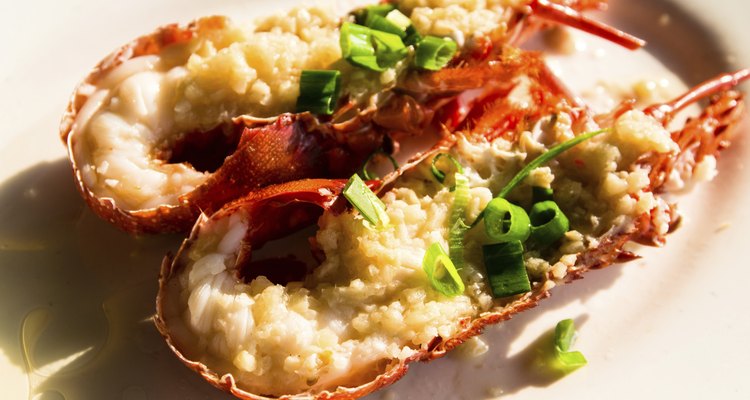
atosan/iStock/Getty Images
Lobster tails can be cooked whole, but cutting them beforehand allows for more variety in seasonings and, in some cases, is better suited to certain dishes or cooking methods. While most tails are butterflied — the top, rounded portion of the shell is split in half, partially exposing the meat — lobster tails can also be cut in half, or in rounds, or the tail meat can be removed before cooking.
Butterflying the Tail
To butterfly the tail, cut lengthwise through the top of the shell, the colored, rounded, harder portion of the tail. Cut until you reach the base of the tail fan, using poultry shears or a sharp knife. Pull along the cut, separating the two sides and exposing the meat. Gently pull the tail meat up out of the shell, so that the flesh stays exposed, sitting between the shell top halves. Remove the clear, white vein running through the center of the meat by lifting and pulling. This method is good for broiled, grilled or roasted lobster tails, as the exposed flesh chars slightly during cooking. Brush the meat with clarified butter or olive oil prior to cooking to prevent it from drying out.
Halving the Tail
Place the tail with the hard side of the shell facing the cutting board, with the translucent white under-shell facing up. This section is softer and easier to cut through. Slice lengthwise along the center of the tail, cutting all the way down through the hard shell on the bottom. Keep the tail meat inside the shell, but remove the vein running through the lobster meat — on one or both halves of the tail. Brush with butter or oil before cooking. As is the case with a butterflied tail, this prevents the meat from drying out. Because of the flat surface of the meat, this preparation method is well suited for heavily sauced tails, such as adding marinara sauce or béchamel, prior to broiling, roasting or grilling.
Cutting in Rounds
This method cuts the tail into round segments, perpendicular to the length of the lobster tail. Curl the tail so that the translucent membrane between sections of the hard, rounded shell is exposed. Using a sharp pointed knife, cut through the membrane, starting with the tip of your knife before pushing down and cutting through. You will have round sections of tail completely surrounded by shell. The size of the rounds will depend on how large individual segments of the tail are. Leave the shell surrounding the meat or push the flesh out of the shell, gently, using your hands. This method works for sautéed or pan-fried lobster where sections of tail are needed. While you can grill the rounds, be careful that they do not fall through the cracks in the grate.
Removing the Meat Whole
To remove the tail meat as one large piece, cut along the sides of the translucent membrane on the underside of the tail. Cut through the center of the membrane, pushing down on the sides to crack open the harder, rounded portion of the shell. Be careful as the underside of the lobster has sharp points that can cut your hands. Conversely, cut along the outer edges of the soft underside, and peel back the membrane, pulling out the tail meat from the rounded portion.
As raw lobster meat can be difficult to remove, consider poaching or steaming your tails briefly — roughly 1 1/2 minutes per pound of lobster. This will help the meat separate from the shell more easily. Remove the tail meat while the lobster is still hot as cooling causes the meat to stick to the shell.
Serve whole tail meat poached in sauce or clarified butter for an elegant presentation. If you want to serve it in the shell after cooking, you also need to cook the shell before reinserting the meat.
Related Articles
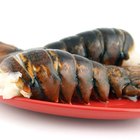
Step-by-Step Instructions for Boiling ...

How to Devein Tiger Prawns
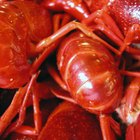
How to Peel & Devein Crawfish
How to Cook Frozen Lobster Tails
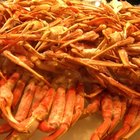
How to Cut Crab Legs

How to Clean Scallops

How to Cook a Lobster on a Foreman Grill
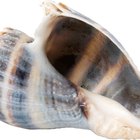
How to Remove Whelk Shells

How to Cook Langostino Tails

Difference Between Boiled & Grilled ...

Does Lobster Taste Better Boiled or ...

How to Cook Butterfly Pork Tenderloin ...
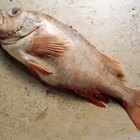
How to Cook Redfish on a Grill

How to Thaw Lobster in the Microwave

How to Use a Shrimp Deveining Tool
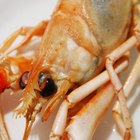
How to Prepare and Eat Raw Shrimp

How to Eat a Raw Chestnut

How to Steam Lobster & Shrimp

How to Keep Burgers Flat While Cooking

How to Eat Stone Crab
References
Writer Bio
David Grimes has worked professionally as a chef since 2002, in settings as wide-ranging as a corporate caterer and as a sous chef in a Michelin-starred French restaurant. He has been writing about food since 2009 and published in "Time Out New York" and "Food and Wine" magazine.
Photo Credits
atosan/iStock/Getty Images